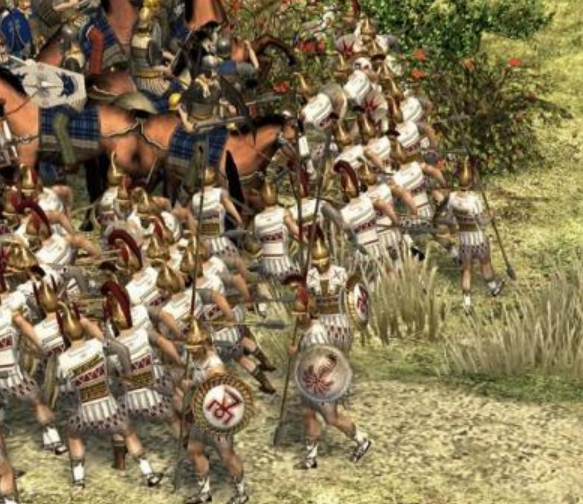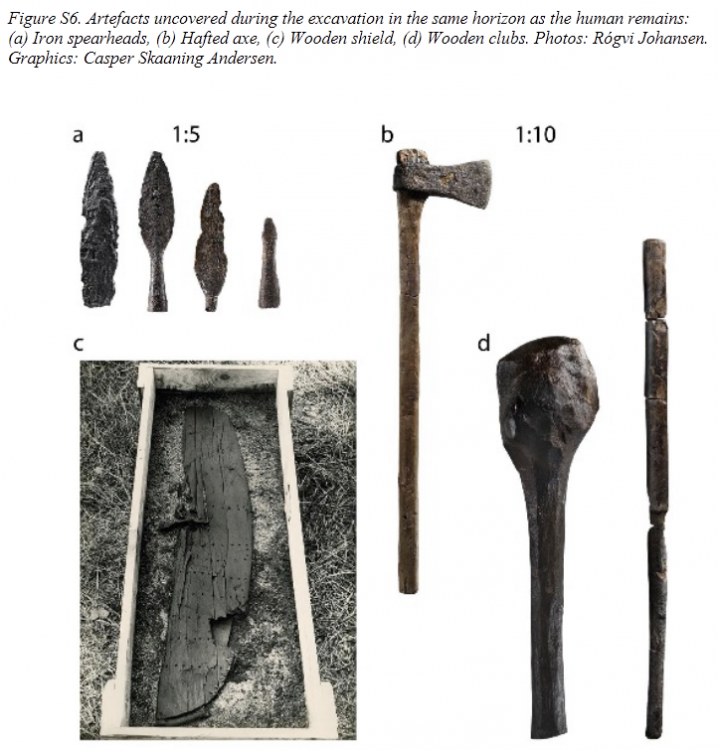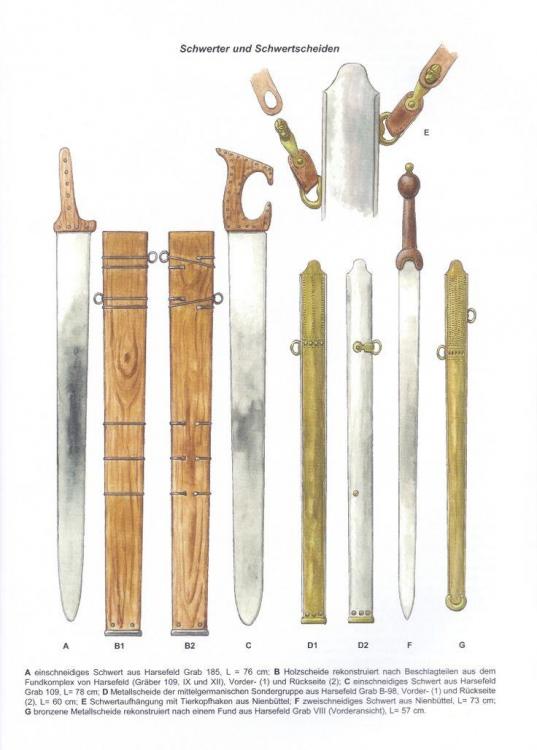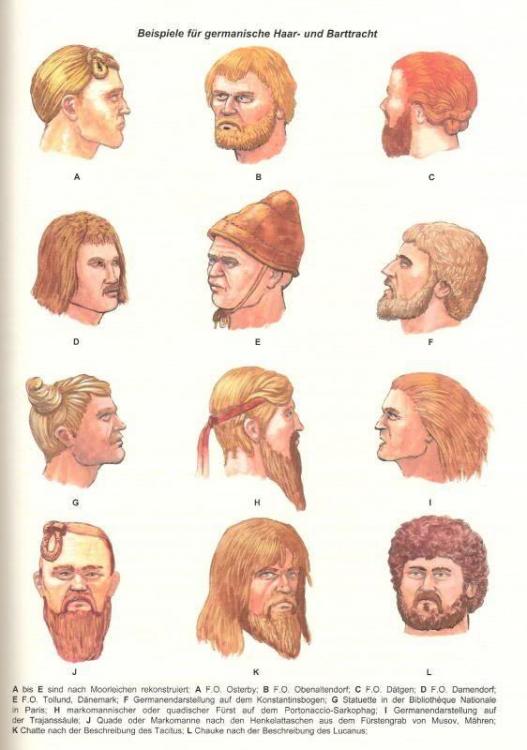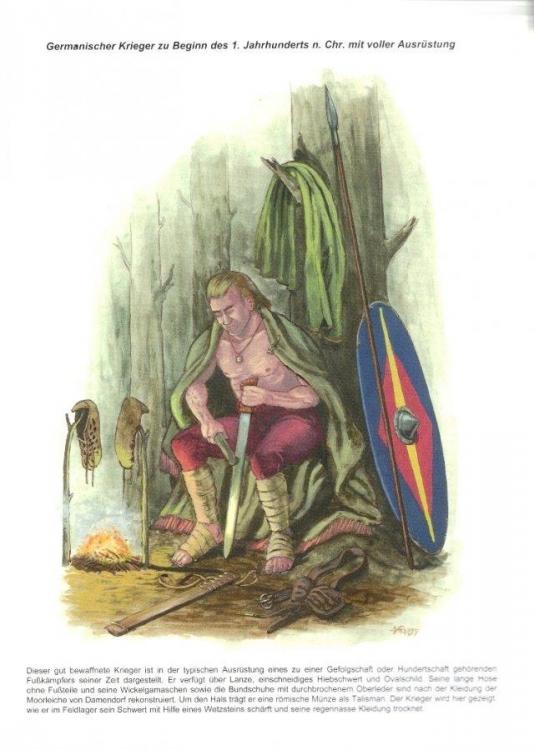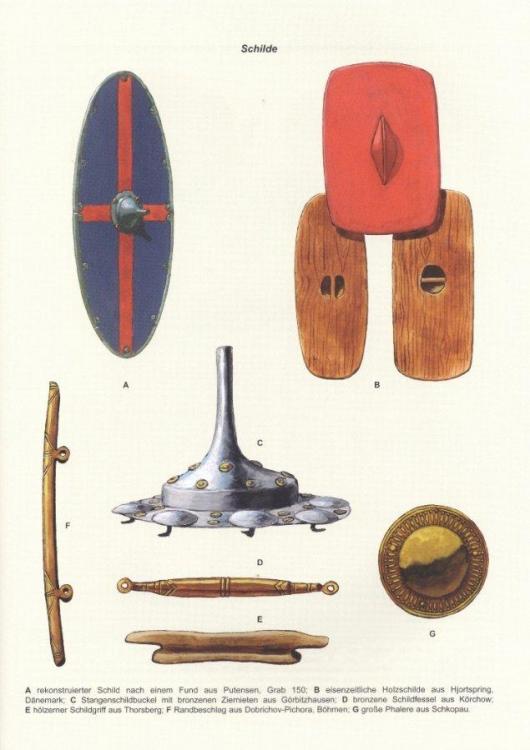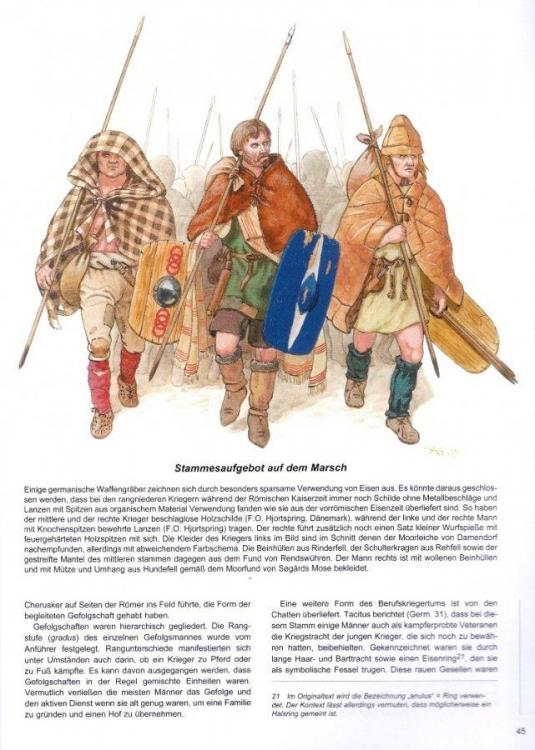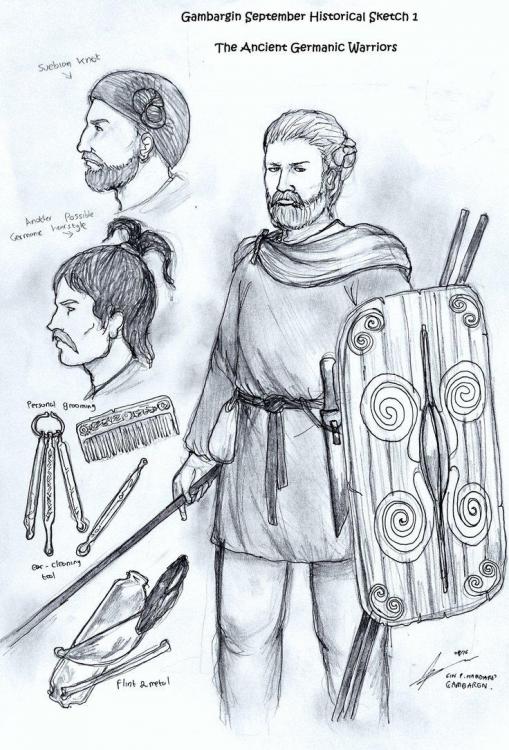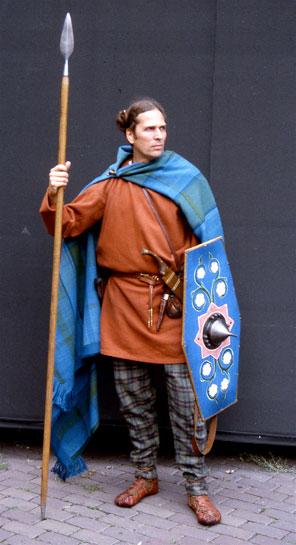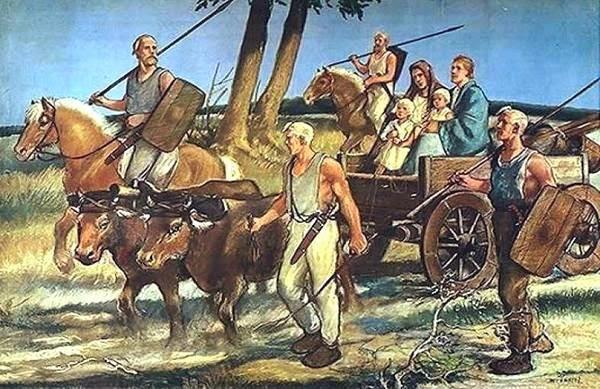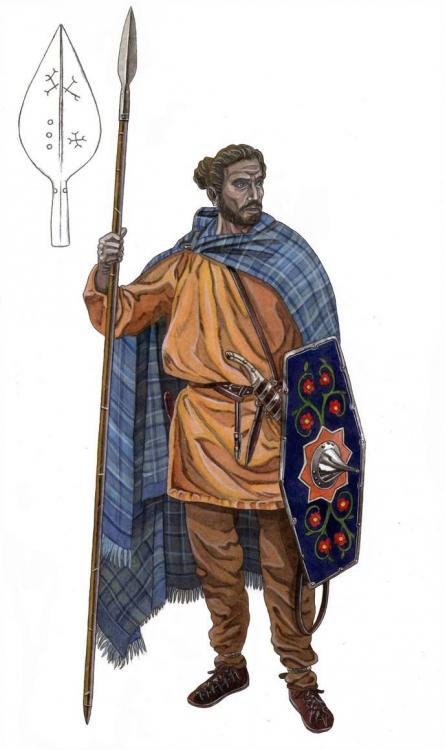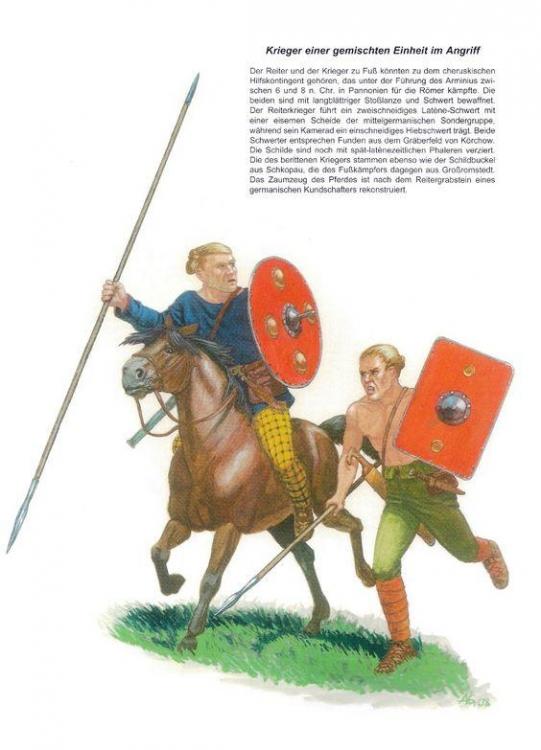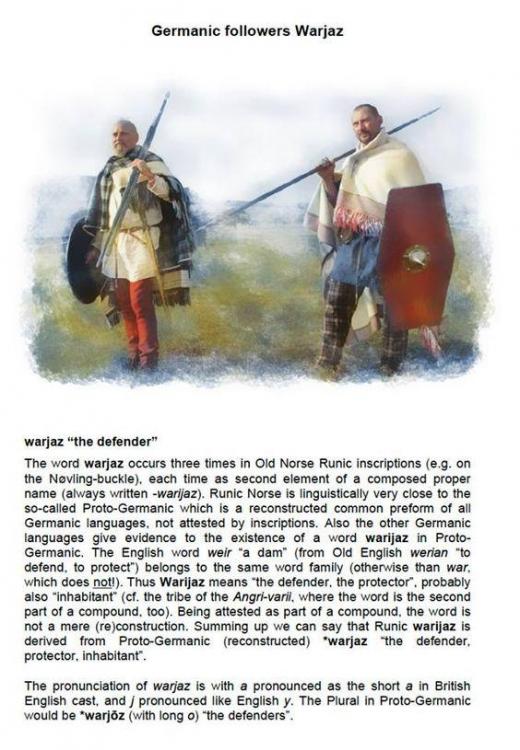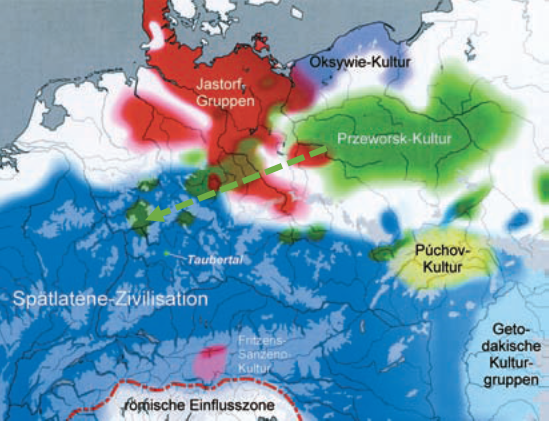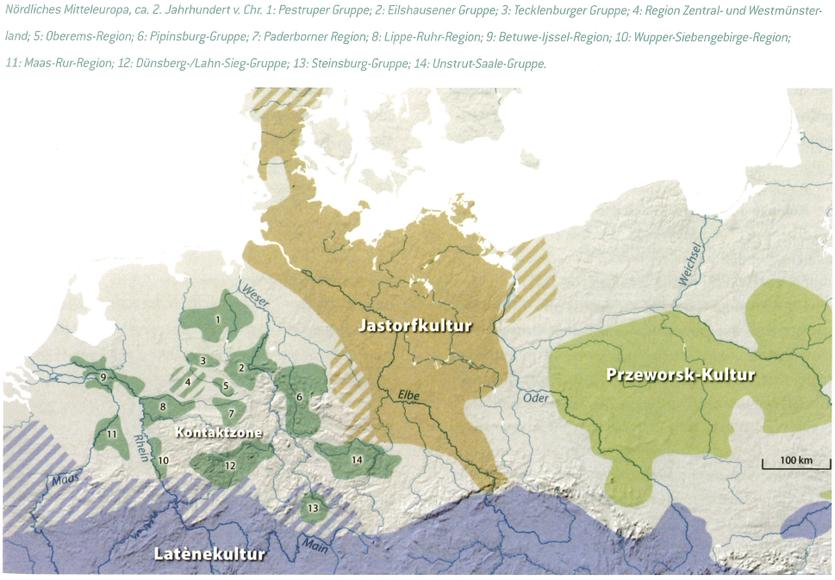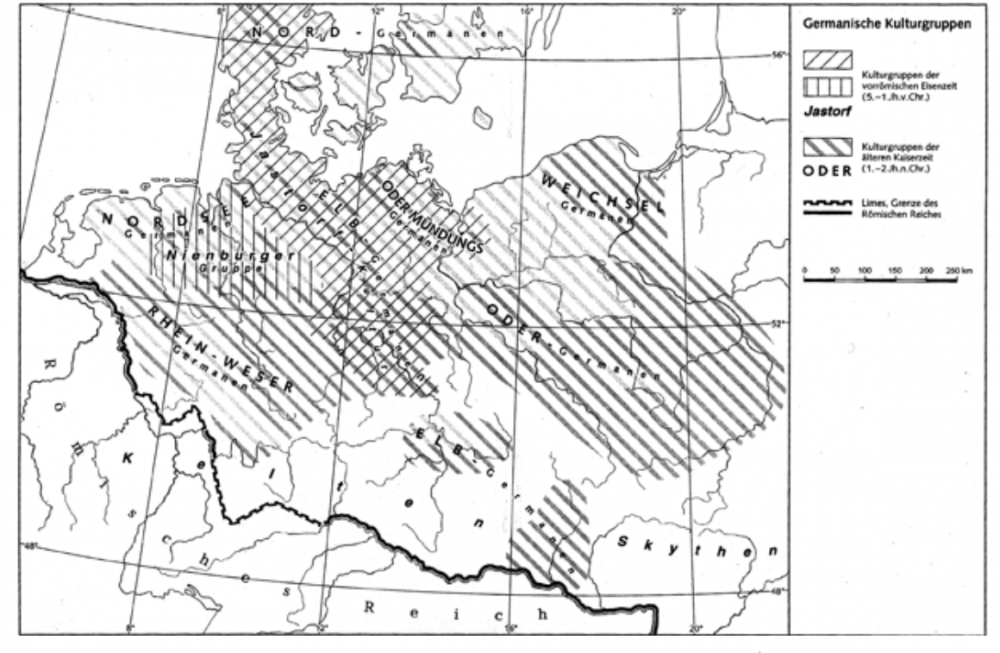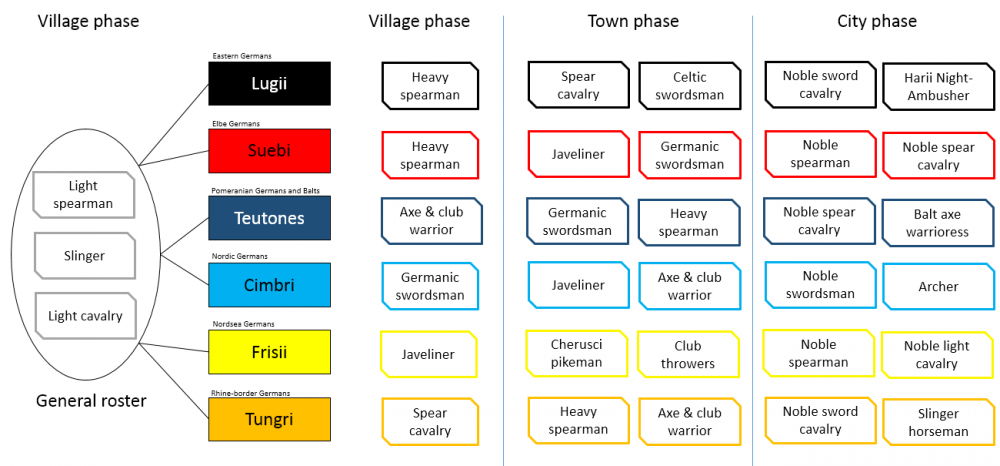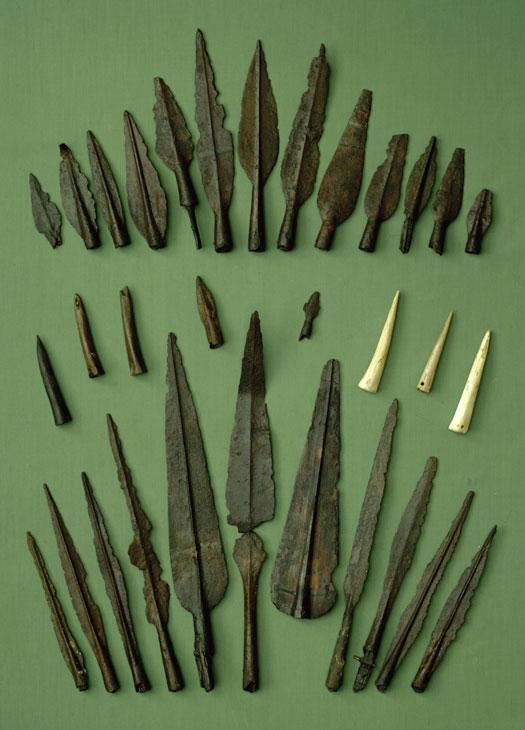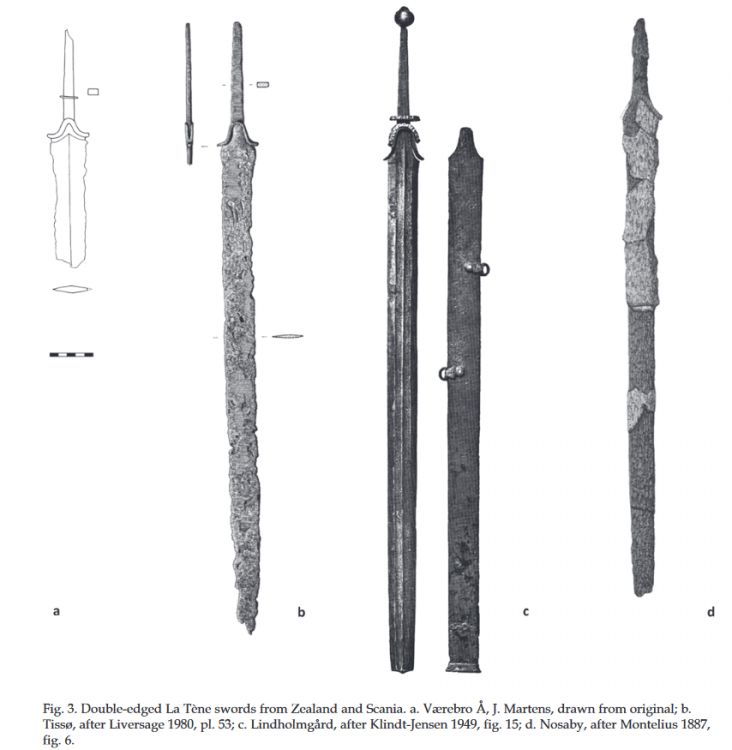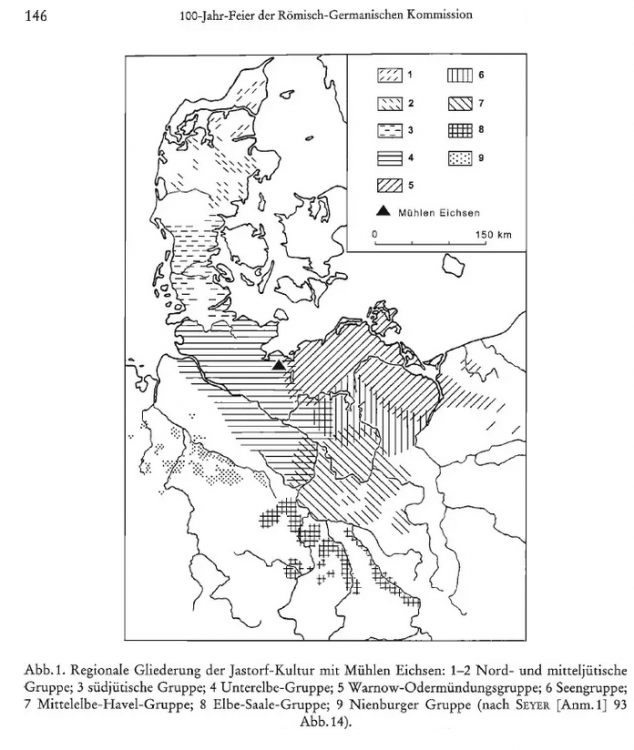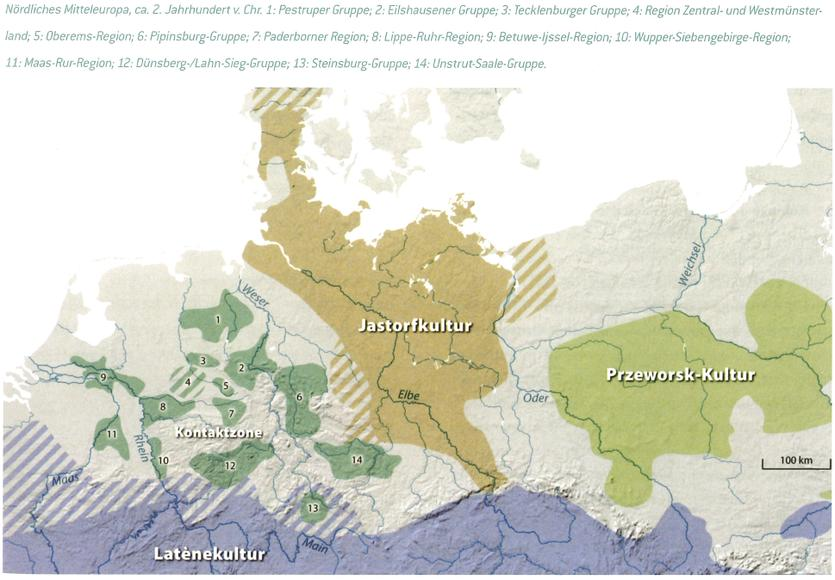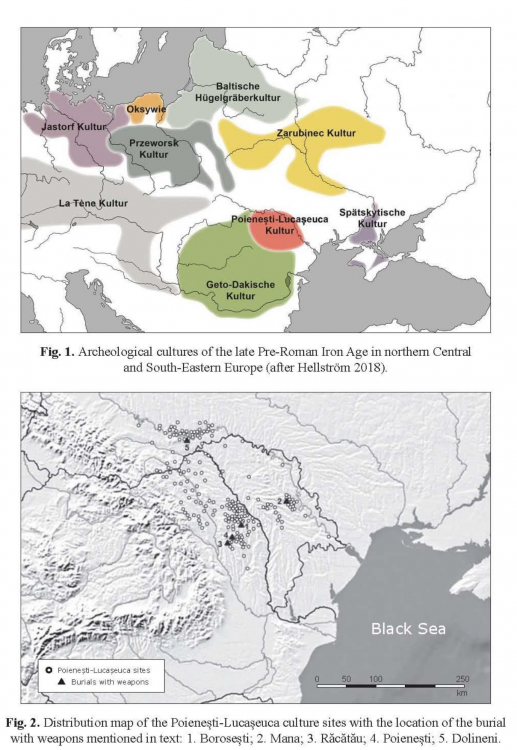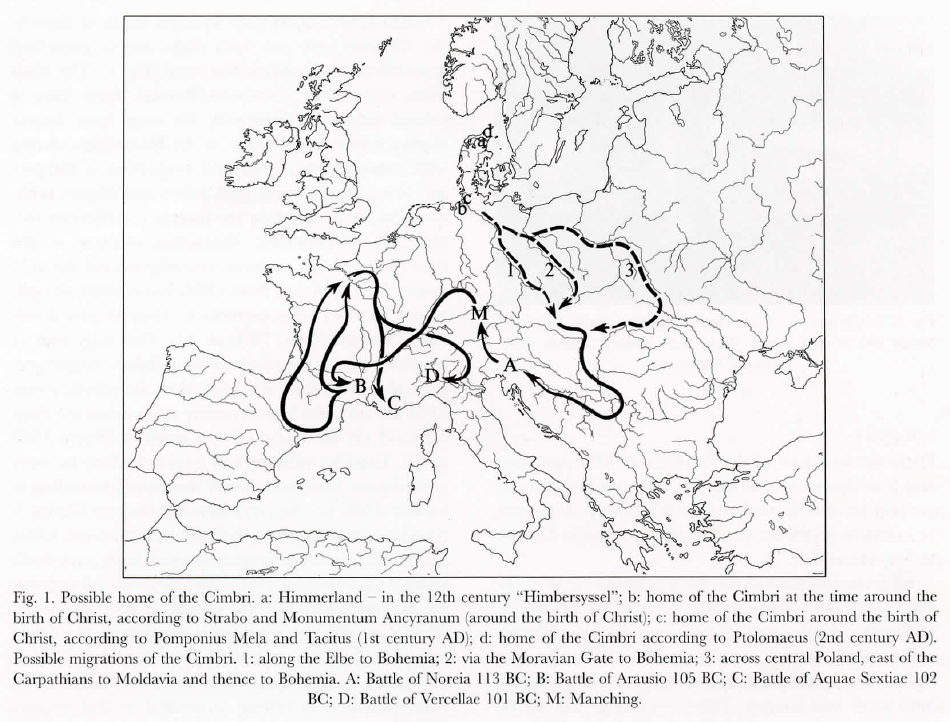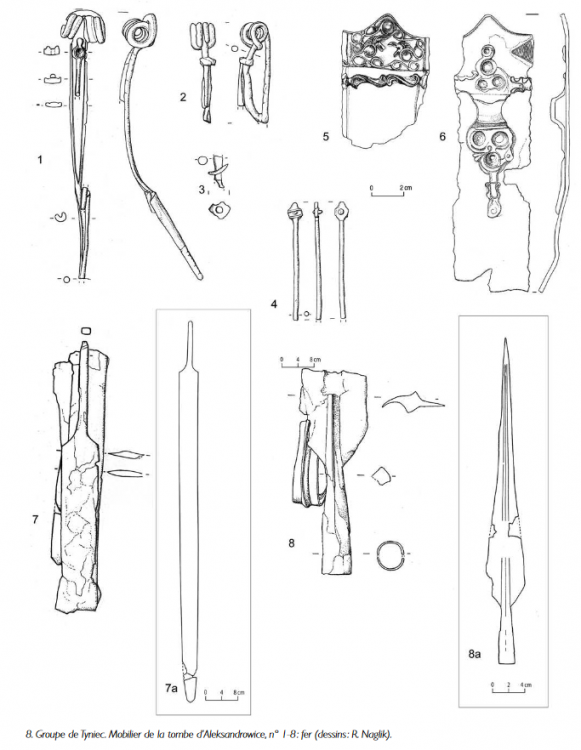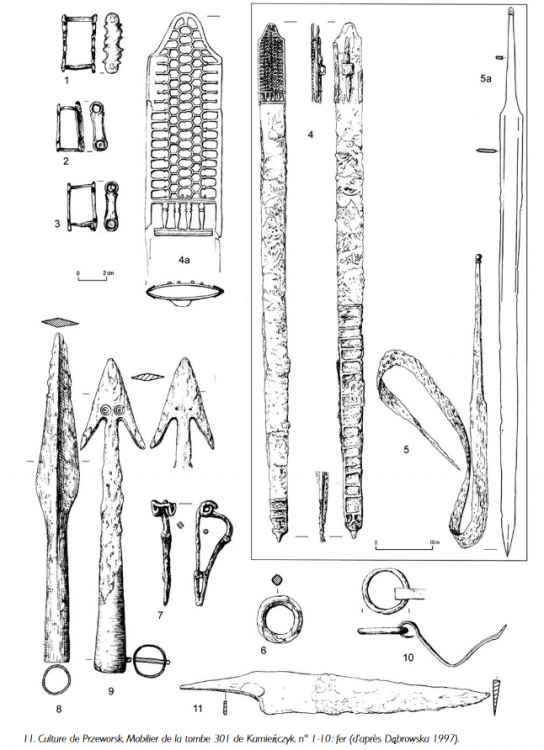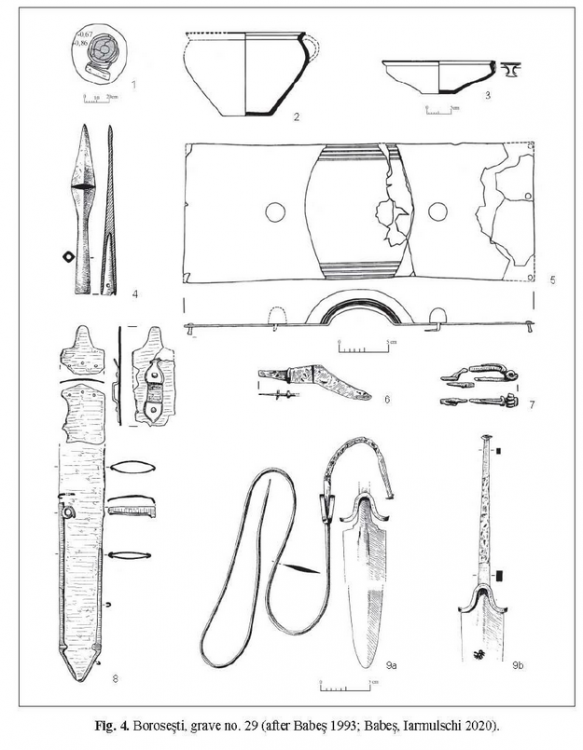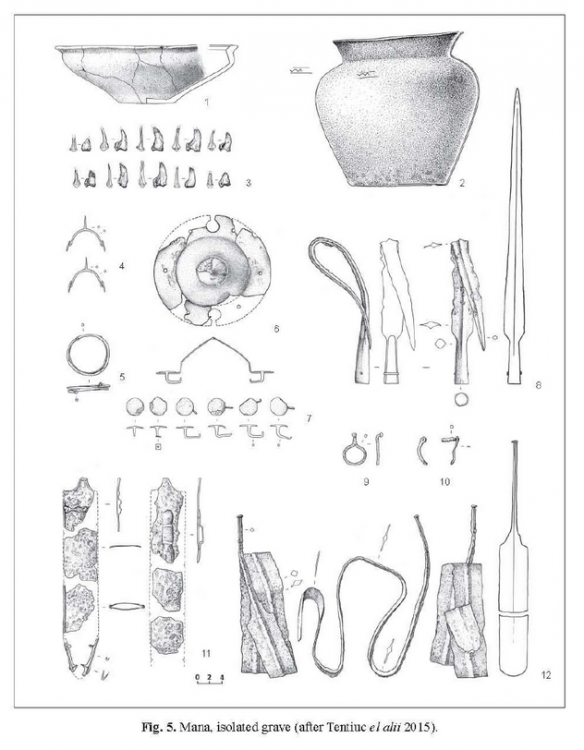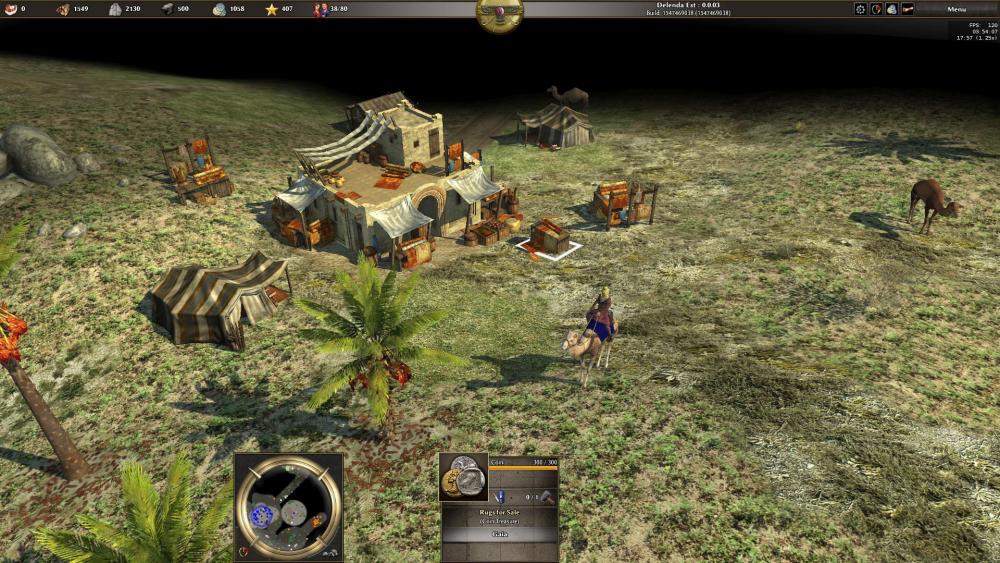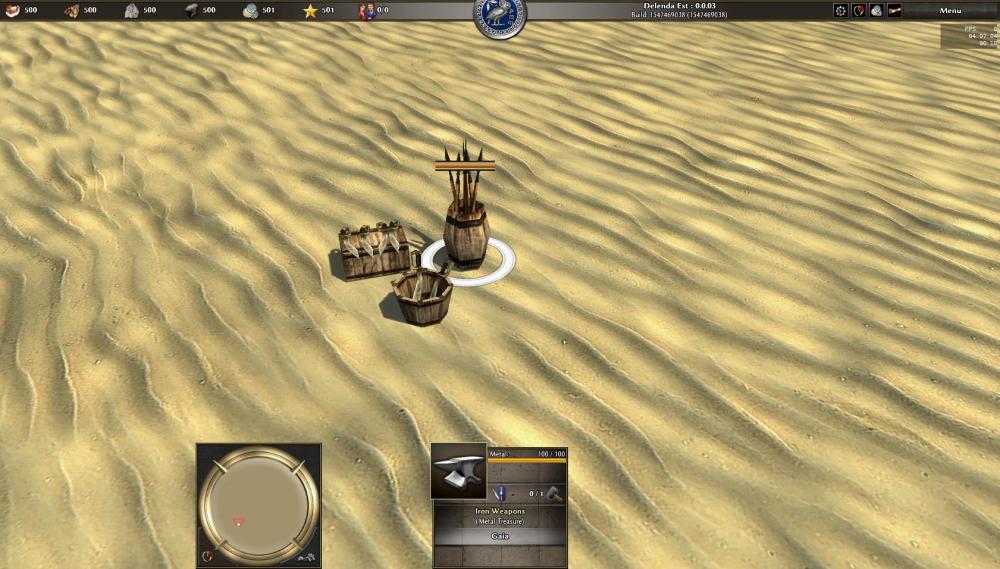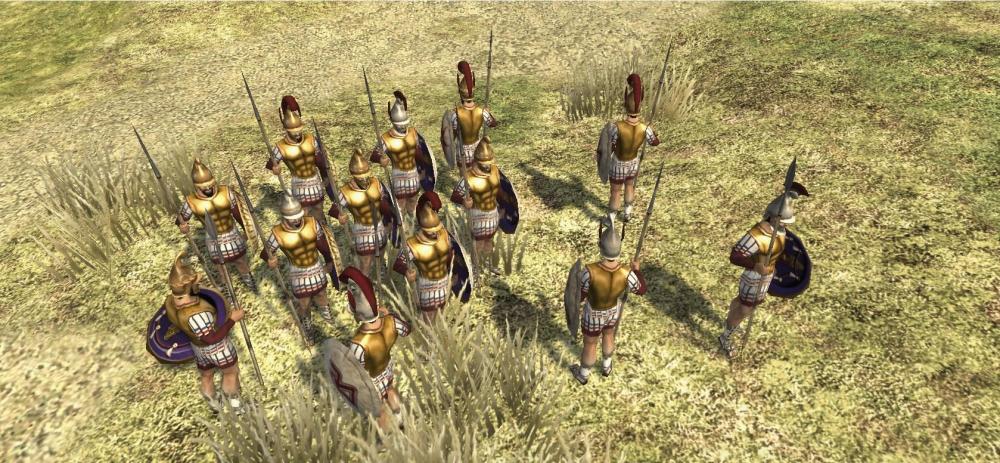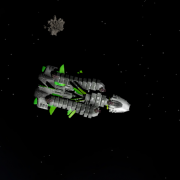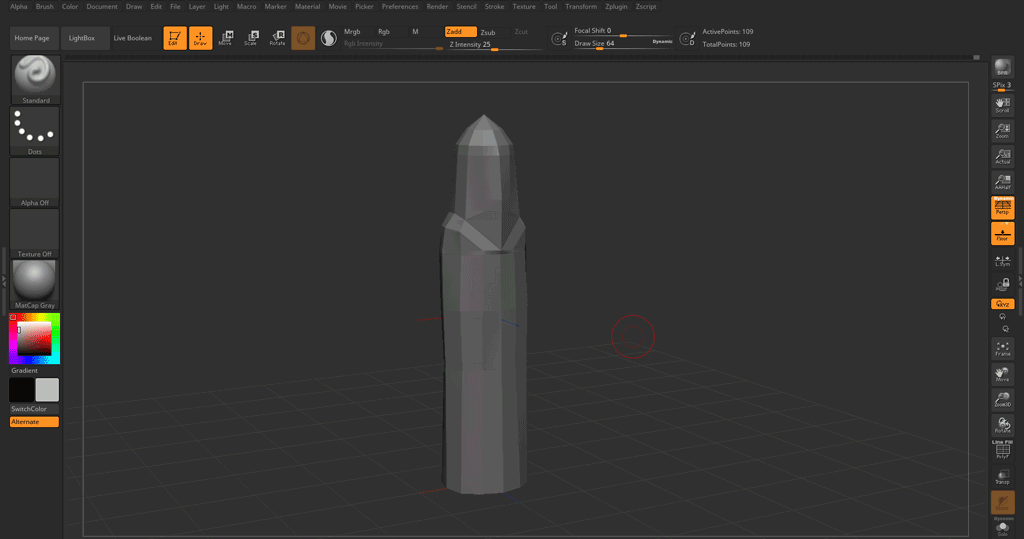Leaderboard
Popular Content
Showing content with the highest reputation on 2019-04-24 in all areas
-
4 points
-
4 points
-
Convince me. the goals of the project why it should be advertised what is the motivating force behind it what is the origin of the idea what is your vision of the future concerning the relationship of 0 A.D. and this event what are your expectations and hopes for the future of this event It doesn't matter that I can answer half of the questions myself, I am interested in your reply. And some practical questions like: how much space would you need what would be written whether or not this would entail links being displayed that do not lead to sites controlled by Wildfire Games whether you expect more of us if we accede to this request I'll probably come up with it myself if your idea doesn't fit the panel look.3 points
-
3 points
-
2 points
-
2 points
-
It's possible, but much more expensive. I don't think that we will have that until we drop all GL versions less than 3.2 points
-
Thx for that clarification @elexis and as the face man said if the maintainer did indeed make a mistake in his packaging of 0ad-data then it does indeed become his task to correct that and as most of the JS is actually part of the data package doubly so . Enjoy the Choice2 points
-
wat someone's never been sling'd at. horrifying experience either way2 points
-
Added converted links. (They are not public, so this is mainly a convenience for the team.) https://wildfiregames.com/forum/index.php?/topic/717-Meeting Summary for the Final Scripting Debate https://wildfiregames.com/forum/index.php?/topic/725-Announcement of final scripting decision https://wildfiregames.com/forum/index.php?/topic/639-Scripting Backend Functionality https://wildfiregames.com/forum/index.php?/topic/638-Scripting Frontend Functionality https://wildfiregames.com/forum/index.php?/topic/715-Lua & Javacript Performance Tests https://wildfiregames.com/forum/index.php?/topic/712-Javascript Proposal https://wildfiregames.com/forum/index.php?/topic/557-The Great Scripting War https://wildfiregames.com/forum/index.php?/topic/622-The Scripting Flame War https://wildfiregames.com/forum/index.php?/topic/644-Macros for Lua Inheritance https://wildfiregames.com/forum/index.php?/topic/629-The Preprocessor Alternative https://wildfiregames.com/forum/index.php?/topic/606-Initial Language Vote2 points
-
Hi, it's possible and it wouldn't be really hurt for performance. I'd prefer to add it with weather and sun. Brightness of clouds or objects really depends on environment brightness: (http://homo-creativus.info/wp-content/uploads/2014/06/IMG_5932.jpg)2 points
-
According to this: https://exarc.net/issue-2017-2/ea/colour-palette-antique-bronzes-experimental-archaeology-project the Corinthian Bronze has a color close to Munsell 7.5R 5/8; Hex #b66158. https://en.wikipedia.org/wiki/Corinthian_bronze Corinthian Black Bronze is different however: https://en.wikipedia.org/wiki/Hepatizon Here an example: https://exarc.net/sites/default/files/Fig. 6. An Hellenistic statuette Corinthium Aes or Hepatizon-2.jpg And a study about it (images on the right side): https://exarc.net/issue-2018-1/ea/experimental-diachronic-exploration-patination-methodology-dark-patinated-arsenical-copper-alloys2 points
-
2 points
-
Yes, exactly. I've introduced a silver resource in my 0abc mod in 2017 and limiting barter and trade is something I like to have. That would certainly be nice to have in the default distribution. It's not inconceivable more mods intend to use a currency resource.2 points
-
basically, look here https://trac.wildfiregames.com/wiki/Alpha23 you have release and others re-release if you want updated version ask a package maintainer.2 points
-
It being obsolete should not be much of a surprise to any long time Debian user could you possibly use the Ubuntu ppa other wise you will indeed need to build from source if you pull the svn repo be sure to revert to the release index other wise you will be running the development version where about half way to version 24 ATM. Enjoy the Choice2 points
-
2 points
-
Hello, Was wondering if anyone knows if its possible to change the shade of shadows. I'm testing to see if its possible to make cloud shadows move over a map, but the current shadows are very dark.1 point
-
Clouds shadows could be faked as a moving texture mapped in the ground / models etc...1 point
-
Yeah it was said that JS could handle 230 calls in a turn LUA 550 and c++ 80001 point
-
Well, some of the discussions are really old (2003-2004) and the people involved may not have ever considered that their discussions could become public. We would want to contact them as a courtesy. At a minimum, we have to look very carefully through each post for anything we release. However, a lot of relevant content from some of those meetings has actually been copied to a public post. It was linked earlier in this thread, but here's another link for convenience: https://wildfiregames.com/forum/index.php?/topic/15068-why-chose-javascript-for-scripting/ [Edit] The "public" posts are actually the beginning of this very thread. @stanislas69 I'm sure the decision was at least somewhat logical at the time, since performance is just one metric. Ideally, for performance we would stick most code in C++ and only have a few items (like AI) implemented in scripts as they did in Age of Empires. The original plan was for 0 A.D. to be closed source freeware, but still much more highly modifiable than Age of Empires. With closed source code, this requires more implementation to be moved to scripts which is itself a major performance trade-off. With the goal of allowing easy modification by hobbyists, rather than professionals, it's much easier to see why syntax would be such a major consideration.1 point
-
Is that policy written somewhere? alpha 23b is the stable of the two... https://wiki.debian.org/DebianReleases speaks about the Security team and a workflow. https://wiki.debian.org/Teams/Security Alpha 23b was a stability release for alpha 23 and adds a security feature that avoids impersonation in the multiplayer lobby rP21877. It's not against the policy if it's within the policy, right?1 point
-
Yep. Basically, everybody who posted to these threads would need to agree to publish them.1 point
-
That's true. And Vegetius wrote in his treatise that slingers are more annoying for infantry than the archers. Generally, missile troops have a supportive and defensive role, slowing down the enemy, preventing a flank attack, preventing cavalry charge, disrupting battle formations etc. etc.1 point
-
I also read that slingers were used to slow units down. It's hard to walk when being stoned1 point
-
There are slingers and slingers. Rhodians, Balearics, Acarnanians were prized mercenaries. Lead bullets are deadly, this is why the Roman army used it until the end.1 point
-
Okay, I have uploaded the patch (which worked fine on my system; D1846) but it gives a build failure now, how can I see what exactly is causing that? Jenkins says something about cxxtest_debug.xml, so I reckon it has to do anything with a test or something, but I've got no clue where to start looking.1 point
-
From all the resources I now read, I still have the feeling that we chose convenience over performance. LUA was better Nearly twice as fast as JavaScript Older than JavaScript (so likely to be more mature) The industry standard for games in all aspects save for Scripter's personnal tastes Syntax (People wanted the language to be more user friendly for non programmers) A special OOP paradigm using metatables JavaScript had Like LUA it matched the frontend and backend functionnality A nicer syntax closer to C OOP through prototypes and now through classes Preference from devs who weren't into LUA at all. Was supported by Mozilla1 point
-
1 point
-
I need opinions about the Hepatizon or the Corinthian Black Bronze. What information do we have about it? And was it possibly used in smiting battle gears like helmets, armors and shields?1 point
-
For some reasons, i would feel safer with someone throwing me random stones than aiming me with a bow .. don't you ? A crushed bone is not lethal, an arrow in the belly button or in the eye is. Also, arrows can go through armour and shields, stones don't. A stone will kill only if landing on an unprotected head. Slingers were the lowest units, no armour, mostly peasants. They were just like auxiliaries. Does it sounds logical that a cheap unit could make more damages than a more valuable one ?1 point
-
I'm sorry, ignorant me, there is a ticket already! (#4370) I'll try to finish my code during lunch today, no promises.1 point
-
Aye, it can be done. But it needs quite some files to be changed, so I'm not sure this is the right place to post that? If anyone wants to make a ticket for it I'm happy to upload my code there. The only part I see some challenges ahead is the bartering, because there are both a selling row and a buying row and a modder might want to be able to sell food for wood, but not food for coin or something. Hmm1 point
-
1 point
-
1 point
-
Thank you for your response. So, the version in debian repositories is obsolete ? Dou you think it will be updated soon or should I build from source ?1 point
-
1 point
-
1 point
-
Weird I went there and Ctrl + F and didn't find it. I will try again. I am sorry I am wasting your precious time.1 point
-
If you want this (that all resources can only be bartered into coin and vice versa, that is wat you want right?) you need to change barterButton.Buy.hidden in the menu.js in gui/session to if (g_BarterSell == "coin"){ barterButton.Buy.hidden = isSelected;} else {barterButton.Buy.hidden = resourceCode != "coin";} provided that you want coin to be bartered. I could also write some code to do this more cleanly, if anyone wants that? More cleanly: setting up a barterable parameter in the resource. But since I'm not going to use this I stop here for now.1 point
-
Did you check these links? One can open them by replacing the topic ID of current forum URLs. (Even if the decision was based on one mans discretion, then there are still arguments posted for that language, I guess all over the place.) (For a presentation that should explain why JS instead of other scripting languages is used, one might also compare the 2004 decisions against the 2019 reality of scripting languages (whatever that may be) and check whether it was a good choice or one worthy of improvement.)1 point
-
Thread: https://wildfiregames.com/forum/index.php?/topic/25730-concept-task-cimbrians-ambrones-teutons/&do=findComment&comment=373419 Useful source: http://elfinspell.com/TacitusGermanyContents.html And: https://en.wikisource.org/wiki/The_Annals_(Tacitus) Discussion about Cherusci pikemen: http://gladius.revistas.csic.es/index.php/gladius/article/download/287/290 Early Germanic Warfare: https://www.jstor.org/stable/650090?seq=1#metadata_info_tab_contents Cimbri material: https://wildfiregames.com/forum/index.php?/topic/25730-concept-task-cimbrians-ambrones-teutons/&do=findComment&comment=373394 Przeworsk: https://wildfiregames.com/forum/index.php?/topic/25186-iron-age-pre-and-proto-germanic-bibliography/&tab=comments#comment-366650 Germanic populations were not uniform and could have spoken different languages with different degrees of development from Proto-Germanic and with different loans from others languages. Moreover, the Przeworsk culture (associated with the Lugii) has a strong relationship with the La Tène culture and we have have no understanding of its consequences on the language of these populations. The Jastorf culture group is one of the most known, mostly thanks to Kossinna's work, but is based on a typology for potteries and fibula. Cremation burials is not an unique particularity coming from the Jastorf culture, so the narrative often seen in forum that the origin of the modern Germans comes from this culture is wrong. The Jastorf culture is old and was contemporary of the Hallstatt culture, it started to spread in Poland but got replaced by the Przeworsk culture during the third century BC. Contrary to the Przeworsk culture, the Jastorf burials have very little weapons. In the North, Upper-Denmark and Scandinavia have a lot of weapons, even chainmails and Celtic longswords. These region are not "Jastorf" although. In contrary, there is as much Jastorf than Eastern influence (Przeworsk, Oksywie and Pomeranian), and even Celtic influence through the Nord Sea. For the Rhine, Weser and Netherlands regions, there are numerous small cultural groups, always influenced by the La Tène culture before the 1st century BC and by the Jastorf after. Their language seems to have evolved and to have mixed Celtic and Germanic dialects, as it is possible to seen multiples Germanic tribes with Celtic etymology (Usipetes, Tencteri, Ubii etc.). Romans seem to have both overgeneralized the Germanic populations while specifying differences. The word "German" is known to have been a made-up label by the Romans (mostly Caesar) to highlight the natural border of the Rhine. It could have come from a name used by the Tungri, the first Germans Cis-Rhenani, and mistakenly applied to every tribes from the other side of the Rhine. Tacitus highlight the existences of two huge groups of Germanic populations: the Suebi and the Lugii. The former's territory is known to have been a place of numerous elite burials with few weapons, probably thanks to the Romans payments to maintain security. While the latter is known for the numerous weapons burials of the Przeworsk. However, Tacitus specify clearly which tribes belongs to these groups and so the tribes that are different. Most of them are different, clearly suggesting an important diversity during the 1st century AD. Since Augustus, Jutland was characterized by being the home of the Cimbri, relabeled Cimbrian promontory although there are different tribes there. The migration of the Cimbri is very possibly related to the Przeworsk culture, which could explains a lot of their "Celticity", acquired by alliance during their travel. This important diversity of the cultures, the important diversity of the warfare techniques, the poor military equipment (almost no helmet, bones and wooden weapons, wooden clubs, axes) and the poor urbanistic development of the Early "Germans" make the choice of regrouping them in an unique faction very difficult. Generally, video games put everything in the Suebi group and represent only this cultural group because it is easier, with the result they become the German standard. Although they take whatever they can from other tribes and other era to complement the faction, resulting with a strange mix of something that never existed. Finally, Germans is a label mainly used to describe the tribes of the migration period, when the Germanic identity has been built up by several centuries of symbolic and cultural opposition against the Roman Empire. It is far easier to divide these populations in different group like Goths, Franks, Saxons, Alemanni etc. with their own characteristics, it is sometimes what is done in videogames (like in Attila Total War). However I found it funny because the cultural distance between the Goths, the Franks, the Saxons and the Alemanni is smaller than between the Suebi, the Lugii and the Rhine germans. So, be careful with the Early Germans if you want to represent something that most closely reflects reality. Sadly, it doesn't exist any visual representation of the Lugii, of the Pomeranian or of the Rhine Germans that differentiate them of the Suebi. There is no turnkey designs, easy to understand and to apply. Summary (a few words, to be completed): General: Polyvalent spearman using the framae (frames), slingers. Rhine-Weser tribes: A region with a few helmets and La Tène longswords, important iron production, zone of contact and trade. Batavi: Strong horsemen and infantrymen. Batavian Revolt and Siege of Castra Vetera. Slinger horsemen. Chatti: Strong infantry, one of the best. Long hair and beard, cut only after their first kill. Discipline. Both Celtic and Germanic spearheads in the region. Tencteri: Swift cavalry, very experimented. Both accounted by Tacitus and Caesar. Nordsea tribes: Frisii: Correct cavalry (used as irregular auxiliaries). Warriors venerating Baduhenna. Leather production for the exportation (Romans) Chauci: Noblest and less warlike tribe according to Tacitus (but ready to war). Correct infantry and cavalry, dense population. Cherusci: Ariminius tribe. Known pikemen. Strong infantrymen. Osiers woven shields. Little armor and helmets. A lot of javeliners and slingers. Suebian tribes (Elbe): Most influential group in the late period (Roman Empire era). Characterized by a Suebian knot. A lot of noble burials in the Roman era. Langobardi: Long beards. Small number but strong. One-edged Germanic swords found in their territory. Hound's clan possible symbol. Semnones: Most religious and strongest authority among the Suebians. Not a lot of military fates although. Marcomanni: Strong cavalry. Little armor, barbed javelins, wooden clubs, germanic swords. Bravest of the Suebi. East tribes: Strong military archaeology since 2nd century BC (among the earliest). Late Celtic helmets. Zone of numerous warrior burials (but less prestigious than the Suebi burials, more warlike however). Lugiones: Spread tribe, most common mercenaries in the Germanic world. A lot of La Tène weapons. Bastarnae: Strong cavalry, bear-skin bearer horseman burial, Celtic longsword, mixed cavalry with light infantry. Harii: Famous night warriors with body painted and black shields. Pomeranian tribes: Lemovii: Round shields and short Germanic swords. Rugii: Round shields and short Germanic swords. Teutones: Balt/Pomeranian according to Pytheas. Swords. Aestii: Axe female warrior. Nordic tribes: Strong military archaeology since 3rd century BC (among the earliest). A lot of noble burials and high prestige goods from trading. Suiones: Powerful fleet. Axe, bow in burial. Cimbri: Early swordsmen (Celtic sword and Germanic swords), Noblemen (Chainmail), Bone javelinhead, Celtic spearheads. Pictures: Edit: Encyclopedia entries: Germans Germans (Germani), after the Celts the second major linguistic and cultural grouping encountered by the Graeco-Roman world in northern Europe. It was the Romans' failure, between 12 bce and 9ce, to absorb the Germanic peoples west of the Elbe that compelled them to centre the defence of their western empire on the Rhine (Rhenus) and upper Danube (Danuvius). Sporadic German raiding in the 1st and 2nd cent. ce developed into prolonged trouble in the 3rd cent. with the emergence of the Frankish and Alamannic threat to Gaul and Italy, and with the application of Gothic pressure on the lower and middle Danube. The relative pacification of the Goths in the 260s and 270s (see heruli) left the Franks and the Alamanni as Rome's most important Germanic enemies down to the last quarter of the 4th cent., after which large-scale Gothic settlement south of the Danube unbalanced imperial foreign and domestic politics. The early 5th cent. saw the Goths sweep from Thrace through the Balkans into Italy, thence to Spain and back to Gaul. Vandals, Sueves, and Burgundians also crossed the Rhine in force. The Alamanni were less adventurous, but from the 480s the Franks began to move south. The early development of the Germanic peoples is notoriously difficult to establish. Modern research has demonstrated how much our two best informants, Caesar and Tacitus, were influenced by their cultural prejudices and their literary strategies. (For example, Caesar's emphasis on the Rhine as a distinct boundary between Celts and Germans is now recognized as political, not ethnographic, in origin.) The views of the Celtic Gauls no doubt also confused the picture (the ethnic, ‘German’, appears to have been Gallic, picked up and exploited by Caesar, and never applied by Germans to themselves). The chroniclers of the post-Roman Germanic successor-kingdoms were equally capable of inventing significant elements of their early history; and modern studies have been bedevilled by nationalism and ideology. The conventional view is that German language and culture originated in northern Germany and lands about the western Baltic from about 500 bce. Movement of peoples, leading to the reversal of Celtic expansion and Germanic contact with the Mediterranean world, took place from c.300 bce. In the west, this included the Cimbric migration of the 2nd cent. bce—probably also the date of German settlement across the lower Rhine. The early 1st cent. saw the arrival of the Suebi on the upper Rhine. In the east, the Germanic Bastarnae appeared on the borders of Thrace as early as c.200 bce; and the same period probably saw the establishment of the distant ancestors of, amongst others, Burgundians, Goths, and Vandals, between the Oder and the Vistula. The reconstruction of Germanic society faces similar problems, and must also take into account the wide geographical spread of Germanic settlement and cultural differences between its many peoples. However, careful combination of our best literary information (above all, Tacitus' Germania) with modern archaeological research produces a picture of a simple (by comparison with the Celtic) but developing iron age society, with permanent farms and villages. Agriculture was both arable and pastoral, and produced raw materials which could be traded for the finished goods of the Roman empire. Though there could be nominal kings, real political power was diffused among local clan chiefs: unlike the Celtic, the Germanic peoples produced no proto-urban settlements which might accommodate central administrations. They were effectively unified only in time of war, under a battle-leader—the final decision on whom, as with all matters of importance, was taken by the warriors in a tribal assembly. It was this absence of a clearly defined state-structure that afforded the Germans a highly flexible response to Roman aggression, and protected them from conquest. Alamanni Alamanni (Alemanni), a loose concentration of Germanic communities, under various petty kings, located on former Roman territory west of the Rhine and north of the Danube in the 3rd and later cents. ce. Though not securely attested in our sources until 289, Alamanni of a kind were probably first encountered by Caracalla on the middle Main in 213. ‘Alamanni’—‘All Men’—is Germanic, but its precise derivation and meaning are highly contentious. It may have been the nickname of a small band of warriors, picked up by Rome and applied to the wider grouping for administrative convenience. Ethnically diverse (including former Romans and their descendants), their cultural heartland lay on the Elbe, like Tacitus’ Suebi. But Alamanni were not the product of some great Suebian ‘folk-migration’. Raiders from the Elbe had been probing the Main and its tributaries from the late 2nd cent., with some choosing to settle in the area. By the mid-4th cent. this had created an ‘Elbe-Germanic triangle’, with its base on the Elbe and its apex at the Rhine-knee. Within this triangle there was continued circulation of population. Romans may therefore have applied the term ‘Alamanni’ to Elbe-Germani resident in the top third of this triangle (roughly the old Agri Decumates and northern Raetia): ‘Alamannia’. This labelling was generic, not ethnic: those who left ceased to be Alamanni; newcomers became Alamanni in their turn. Over time, however, and certainly by the 5th cent., the inhabitants of Alamannia recognized themselves as Alamanni and were seen as such by other Germani: an ethnic not a generic. This was part of a general process of *‘ethnogenesis’, by which new Germanic identities were reforged from old in the crucible of the declining empire. Because of their relatively frequent appearance in the sources, Alamanni offer a unique insight into the Romano-Germanic relationship, in particular the conflicting roles of Germani as enemies and allies. Alamanni raided the empire from c.200. They frequently harassed Gaul, in the 3rd cent. penetrating as far as Aquitania; in the mid-4th they won notoriety by their attempt to occupy land west of the Rhine, frustrated by Julian’s victory at *Strasbourg in 357. However, they were mainly feared because of their dangerous proximity to Italy. New epigraphic evidence shows *Iuthungi, later associated with Alamanni, enslaving Italians c.260. Other raids into Italy by Alamanni and Iuthungi in 260, 268/9, and 271 prompted Aurelian’s re-walling of Rome (see wall of aurelian); and emperors took care to develop and maintain the Rhine–Danube–Iller limes, guarding entry into the peninsula. Yet Roman fears, exacerbated by memory of the furor teutonicus of the Cimbric wars, were arguably groundless. Alamanni were scattered, poor, and relatively few. They were also politically divided: never a ‘confederation’, and so never really ‘the’ Alamanni. A highly competitive, violent, warrior-ethos drove them to attack the empire whenever it was vulnerable, above all during civil wars. These attacks were traumatic: archaeological evidence shows that Alamanni tortured captives; and inhabitants of Mainz enslaved by them over Easter 368 must have been profoundly shocked. However, Alamanni posed no strategic threat: they could always be brought to heel. This fundamental inferiority helps explain why Romans permitted Alamanni to move into imperial territory c.262—at a time of huge internal discord when it suited Roman rivals to withdraw tactically from the Rhine–Danube re-entrant without ceding sovereignty of the area. It may also have allowed Roman rulers, such as Julian and Valentinian I, to play up the Alamannic ‘threat’ in order to wage easy, reputation-enhancing wars of ‘retribution’. Alamannic chieftains were incapable of, and probably never wished for or even conceived of, conquest of the empire. After the 3rd cent. they never again threatened Italy; and there are indications that some Alamannic incursions during civil war were instigated by Roman leaders. For most of the 4th cent. they collaborated readily with Rome, in return receiving support for their local status, cash subsidies, exclusive access to manufactured goods, and opportunities for service in the empire. Alamanni, indeed, provided significant numbers of military officers (the most distinguished known being Agilo, senior general of Procopius) and men (in both irregular and regular—limitanei, auxilia palatina—Units). Alamannic settlements also helped block entry into the empire by later generations of raiders from the interior. This is another likely reason why the empire tolerated Alamanni near the frontier, and why it allowed Alamannic construction of great hill-forts near the Rhine (e.g. the Zähringer Burgberg) and along the Swabian Alps. A friendly Alamannia was also useful to Rome as a short-cut from between the Rhine and Danube, and as a source of commodities, including building-stone, iron, salt, slaves, timber, and wheat. As Alamanni did not envisage destruction of the empire, so it was also in Rome’s interests, despite all the sabre-rattling, not to destroy Alamannia. In fact, Alamanni disappeared from Rome’s list of Germanic bogeymen in the later 4th cent., being replaced by Franks. They continued to act as allies, aiding incumbent emperors and usurpers (e.g. Constantine III) alike; irregular units helped hold the Rhine for Aëtius down to the middle of the 5th cent. But, first elbowed aside by Burgundiansc.400 as these pushed down the Main, and then refusing themselves to exploit growing Roman weakness in Gaul after 455, they were eventually absorbed by Clovis’ Franks c.500. Thus, unlike most other large Germanic groupings—Burgundians, Visigoths, Vandals, Ostrogoths, and, most notably, Franks—Alamanni did not create a successor-kingdom. This may be because they had enjoyed too close a symbiosis with the empire, restricting their development and making it difficult for them to cope with a post-Roman world. Batavi Batavi, a Germanic people, living on the lower Rhine. Though an offshoot of the Chatti, they helped Drusus against the Germans in 12 bce, and frequently thereafter provided military support for Rome. Remaining incorporated in the empire after the withdrawal to the Rhine in ce 9, they paid no taxes, and helped Germanicus attack their fellow Germans in 16. Their warriors formed auxiliary regiments (see auxilia), by the mid-1st cent. serving under their own chiefs; and until 68 they are also found in the personal bodyguard of the emperors. It was they, under the leadership of C. Iulius Civilis, who headed the great revolt of 69–70. Thereafter they were not prominent in Roman history; and their relationship to the Franks, who later occupied their territory, is obscure. Burgundians Burgundians, (Burgundiones), a Germanic people who first appear on the Main soon after 250 ce. They had little contact with the Romans until c.406, when they crossed the Rhine and established a kingdom in the province of Germania Prima (see germania) with their capital at Worms. In 436, following an unsuccessful attempt to occupy Belgica Prima, they were subjected to an appalling defeat by Flavius Aetius and an army of Huns (an event commemorated in the Nibelungenlied). Aetius moved the survivors to Maxima Sequanorum, where the Burgundian kingdom recovered and played a significant role in sub-Roman Gaul, until it was overrun by the Franks in 534. Bastarnae A roving tribe which first appeared on the lower Danube c.200 bce. They were enlisted by Philip (3) V and Perseus (2) of Macedon against their enemies in the northern Balkans, and by Mithradates VI against the Romans. They defeated C. Antonius ‘Hybrida’ (c.62 bce), but were subdued by M. Licinius Crassus (2) (29–28 bce; cf. Cass. Dio 51. 23. 2–27. 3), and henceforth they generally appear as subject allies of Rome, on one occasion under Nero having hostages recovered and returned to them by the Roman governor of Moesia (CIL 14. 3608). One hundred thousand were transferred across the Danube into Thrace (SHA Probus 18. 1), and Diocletian settled others in Pannonia. Their German ethnicity may be deduced from Strabo (7. 3. 17), Pliny (the Elder) (HN 4. 100), and Tacitus (Germ. 46. 1). They appear to have been the first of the race to travel the migration route from the Baltic to the Black Sea, and their movement is recalled on the Peutinger Table, where the Carpathians are called ‘Alpes Bastarnicae’. Chatti A Germanic people, who lived in the neighbourhood of the upper Weser and the Diemel. Although not mentioned by Caesar, they were the most powerful enemies of Rome in western Germany throughout the 1st cent. ce. Overrun by Drusus in 12 bce, they took part in the revolt of ce 9 and were later attacked by Germanicus, who in 15 burned their town of Mattium (exact site unknown), and by the generals of Claudius. They fought a war in 58 against the Hermunduri for the possession of some salt-beds, and took part in the revolt of C. Iulius Civilis in 69–70. They broke the neighbouring Cherusci, but had to yield the Wetterau to Domitian. Their social and military organization was more highly developed than that of the other Germans. Their nobles took even less part in productive life than those of other Germanic peoples. They are occasionally mentioned as attacking the Roman empire in the later part of the 2nd cent., but from the early 3rd cent. we hear nothing more of them. Their name appears to have survived in that of Hessen. Cherusci A Germanic people, living around the middle Weser. They are the best known of the Germanic opponents of the Romans in the 1st cent. ce. Overrun in the Augustan conquest of western Germany, it was their chieftain Arminius who led the revolt of ce 9, which resulted in the defeat of P. Quinctilius Varus and his army. They successfully defended themselves against Germanicus' punitive expeditions in 15–16, inflicting heavy losses on the Romans. They expelled king Maroboduus from among the Marcomanni ( ce 17), and defeated the attempt of Arminius himself to set up a tyranny over them. Thereafter they weakened themselves by their internal struggles which, together with the hostility of the Chatti, reduced them to comparative impotence by the time of Tacitus (1). In later times they are rarely heard of. Cimbri A German tribe from north Jutland. Towards the end of the 2nd cent. bce overpopulation and encroachments by the sea drove them to migrate in company with the Teutones and Ambrones. From the Elbe they arrived, by a roundabout route, in Noricum, where they defeated a Roman consular army (113 bce). They then turned west and entered the Helvetian territory between the Main and Switzerland, where a few of them settled. (Vestiges of a Cimbric element in the population are perhaps implied by inscriptions to Mercurius Cimbrianus at Miltenberg and Heidelberg: ILS 4595, 4596, cf. 9377.) About 110 they entered the Rhône valley. In 109 they defeated M. Iunius Silanus, and then turned into the centre of Gaul. In 105 they were again in the south, where they won the great victory of Arausio (mod. Orange), and then entered Spain, whence they were expelled by the Celtiberians. They now moved towards Italy. C. Marius (1) defeated the Teutones and the Ambrones, who took the western route, at Aquae Sextiae (Aix-en-Provence) in 102, and in 101 destroyed the Cimbri, who had travelled round the Alps and entered Italy by the north-east, near Vercellae, in the Po (Padus) valley. A few of the Germans had remained in northern Gaul; the later Aduatuci claimed to be their descendants. A remnant of the Cimbri was found in Jutland by the naval expedition sent by Tiberius in ce 5 (RG 26). Franks Franks (Franci), a Germanic people who conquered Gallia (Gaul), and made it Francia (France). Their adoption of Gallo-Roman Catholic culture was the seed of French civilization and, hence, that of medieval and modern western Europe. Despite their great importance, their first appearance is late (c. 260 ce), their name (‘the bold’, ‘the fierce’) suggesting a coalition of German tribes on the middle and lower Rhine. From then to the end of the 4th cent. they caused the empire frequent trouble, though they also gave it loyal generals and soldiers. Indeed, 4th-cent. emperors allowed some Frankish settlement on Roman soil in return for military service. However, during the early 5th cent., when the Rhine frontier weakened and the German occupation of Gaul began in earnest, the Franks, like the Alamanni, seemed destined to be eclipsed by relative newcomers. There was some movement across the Rhine into Belgica Secunda, but it was not until the late 5th and early 6th cents. that the various Frankish groups were united by the Salians Childeric and Clovis, and moved south to break the Visigoths and Burgundians. Marcoman(n)i Marcoman(n)i (Stat. Silv. 3. 3. 170 scans Marcomăni), a west German (Suebic) tribe, the name meaning the inhabitants of a border country (‘march’), are first mentioned by Caesar. Stirred up by the Cimbri and Teutones, the Marcomanni left Saxony and Thuringia (c.100 bce) and settled down on the upper and middle Main; they joined Ariovistus' expedition against Gaul. Attacked by the elder Drusus (c.9 bce; see Claudius Drusus, Nero) they emigrated to Bohemia (c.8 bce). There Maroboduus established a powerful kingdom, which Augustus considered a danger and wanted to destroy, but was hindered by the Pannonian–Illyrian Revolt. Weakened by war against Arminius, Maroboduus was expelled by Catualda ( ce 19), who in turn was overthrown by Vibilius (20), the following kings being more or less dependent upon Rome. After wars under Domitian and Nerva peace prevailed till the great Marcomannic Wars (166–73; 177–80) under M. Aurelius. The Marcomanni must have played their part in the subsequent wars on the middle Danube, though they are not very frequently mentioned. After 500 they left Bohemia and occupied Bavaria. See Germans. Goths Goths, a Germanic people, who, according to Jordanes' Getica, originated in Scandinavia. The Cernjachov culture of the later 3rd and 4th cents. ce beside the Black Sea, and the Polish and Byelorussian Wielbark cultures of the 1st–3rd. cents. ce, provide evidence of a Gothic migration down the Vistula to the Black Sea, but no clear trail leads to Scandinavia. In the mid-3rd. cent. ce, Goths from the Black Sea region (see heruli) launched heavy attacks upon Asia Minor and the Roman Balkans. These were eventually halted by the victories of Gallienus, Claudius II (Gothicus), and Aurelian. The Goths have usually been viewed as from this date divided into two—Visigoths and Ostrogoths—but the Gothic world of the 4th cent. probably comprised a number of chieftainships; how many is unknowable. Visigoths and Ostrogoths were actually the product of a later convulsion occasioned by the inroads of the Huns. As a direct result, two separate Gothic groups crossed the Danube in 376, their victory at Hadrianople in 378 paving the way for a more ordered coexistence with Roman power after 382. These two groups were definitively united by Alaric (395–411) to create the Visigoths, but only after being joined by a third large contingent: the survivors of Radagaisus' attack on Italy in 405–6. This force was settled in the Garonne in 418, and, as Roman power waned, created a Gothic kingdom in Gaul and Spain, especially under Euric (466–84). Further east, various (but not all the other) Gothic groups who had either fled to the Romans after c.400 or survived Hunnic hegemony, were united in various stages between c.450 and 484 behind the family of Theoderic (1) to create the Ostrogoths, who then carved out a kingdom in Italy after 489. Theoderic further united both Gothic kingdoms in 511, but this did not survive his death (526). The Ostrogothic kingdom was destroyed by the Byzantines in twenty years of warfare after 536; Visigothic Spain was eventually conquered by Muslim forces in the early 8th cent. Heruli A Germanic people, who participated in the 3rd-cent. ce invasions of Roman territory from the Black Sea region, particularly the expedition of 268–70 through the Dardanelles. Not attested again until the mid-5th cent., when they were subject to Hunnic hegemony; they had probably been subject to the Goths in between. They re-established independence after Attila's death, and fought wars to maintain it against Lombards, Gepids, and Romans. Suebi Suebi, an elusive term, applied by Tacitus (1) in his Germania to an extensive group of German peoples living east of the Elbe and including the Hermunduri, Marcomanni, Quadi, Semnones, and others, but used rather more narrowly by other Roman writers, beginning with Caesar. Tacitus himself in his later works limits the name to the Marcomanni and the Quadi. The central tribe of the Suebi was that of the Semnones living in Brandenburg, who controlled a shrine respected by all other Suebi and the scene of human sacrifices. We do not know the relationship between the Suebi of whom Tacitus speaks and the Suebi who crossed the Rhine in ce 406 and entered Spain in 409. Rübekeil proposes that the Suebic grouping was forged on the upper Rhine c.60 bce, and was the first manifestation of German self-awareness and co-operation. Teutones Teutones, a Germanic tribe, known chiefly from their migration with the Cimbri, whose neighbours they had been in Jutland, to southern France, where C. Marius(1) annihilated them in the battle of Aquae Sextiae in 102 bce. The Aduatuci whom Caesar (BGall. 2. 29) defeated in Gaul claimed to be descended from the Cimbri and Teutones. From a boundary-marker (ILS 9377) it has been inferred, perhaps hazardously, that a remnant of them survived at Miltenburg on the Main. Curiously, Tacitus(1) does not mention them or the Ambrones, who marched with them and the Cimbri. They, with the Cimbri, were immediately demonized by the Romans as archetypal northern savages. ‘Teuton’ as a synonym for German was used by Latin poets long after the Teutones became extinct. Vandals Vandals, a Germanic people or confederation of peoples (see germans) met with in Pliny(1) and Tacitus(1) as the Vandili, an overall designation which seems to have included later independent groups such as Goths and Burgundians. The extent of the confederation may possibly be identified with the Przeworsk culture dating from the early centuries ce found on the territory of modern Poland. By c. ce 200 some Vandals had moved south to lands north-east of the Tisza, a movement associated with the Marcomannic wars (see marcomanni). At this date, they were already divided into at least two groups: Hasdings and Silings. Vandals seem to have played no major role in the 3rd-cent. invasions, although contact with the Roman empire was plentiful. On 31 December 406, however, they crossed the Rhine near Mainz along with Alans and Suebi. After three years of widespread devastation in Gaul, they moved over the Pyrenees, and in 411 the invaders divided the Spanish provinces between them. The Silings occupied Baetica, the Alans Lusitania, and the Hasdings and Suebi Gallaecia. Probably from c.416, a combined Roman–Gothic force destroyed the Silings and so hit the Alans that the survivors attached themselves to the Hasdings, whose leaders were henceforth officially titled ‘kings of the Vandals and Alans’. Under Gunderic (d. 428) the new combined force moved to southern Spain, and, under his successor Gaiseric, to north Africa in 429. An initial series of campaigns led to their establishment in Numidia and Mauretania by treaty in 436. In 439 they broke the treaty and captured Carthage to establish a kingdom further east in the richer Roman provinces: Byzacena and Proconsularis (see africa, roman). The west Romans recognized the conquests by treaty in 442, but the east Romans not until 472. The Unesco excavations at Carthage have produced much new archaeological evidence for the social and economic history of the kingdom, which was eventually destroyed by Belisarius in 533. Arminius, b. c. 19 BCE Arminius, born c. 19 bce, war-chief of the Cherusci, son of Sigimer. He had Roman citizenship, and served long in the auxiliary forces, attaining equestrian rank. In ce 9 he lured P. Quinctilius Varus with three legions into difficult country near the saltus Teutoburgiensis between Ems and Weser (Tac. Ann. 1. 60. 3; the site of the battle has been established by archaeological finds in the neighbourhood of Kalkriese near Osnabrück) and destroyed them. In 15 he fought Segestes, leader of the pro-Roman faction, whose daughter Thusnelda he had married. Segestes was helped by Germanicus and Thusnelda fell into Roman hands. In 16, though beaten by Germanicus and wounded, Arminius again thwarted Roman expansion. In 17, helped by the Semnones and Langobardi, he weakened the neutral king Maroboduus but was deserted by his uncle Inguiomerus; when he aspired to kingship, he faced rebellion. Tiberius rejected the offer of a Chattan (see chatti) chief to poison him in 19, but he was soon killed by his own kinsfolk. He was a prudent tactician and a master of surprise attack, whose greatness was recognized by Tacitus (1): ‘beyond doubt the liberator of Germany’ (Ann. 2. 88). Much has been written, but little established, about his name and the period of his service in the Roman forces: there are no solid grounds for the improbable suggestion that it gave rise to the legend of Siegfried. Edit: To develop a bit my comment, I think it has a potential to answer to some issues about such factions with an important diversity and a lot of variation and evolution during their history. First period: Second period: Third period:1 point
-
The patch was abandoned because it didn't work So it isn't likely to either work or be fixed1 point
-
Added the coin resource to Delenda Est. Lots of changes need to be made (like tech costs and stuff), but it's in. I wish the game had a "coin purse" sound effect (when selecting coin treasures or sending tribute notification). I'll be making Blacksmith techs heavy in metal costs. I'm mulling simplifying techs at the Blacksmith too, but that's an aside. Coin will be used to buy slaves, hire mercenaries, and pay your Champions. You acquire coin through trade/barter, finding coin treasures, and taxing your villagers and merchants. Taxes can be increased or decreased, which also has a slight inverse effect on gathering rates. Right now I do it with tech pairs at the Civic Center, but it would be cool to implement some kind of slider in the far future. I converted the old "Persian" metal treasures to coin treasures, since they represent finished goods, wares, etc. Then made a new "iron weapons" actor to replace the "Persian wares" actors as the metal treasures: Metal treasures have the Anvil portrait now. Pegasus and the Golden Fleece have been converted to Glory treasures now, instead of metal.1 point
-
1 point
-
-I think this is a great idea to add an event announcement to the lobby event section. Let me know what should we do about it. -The idea behind this is to reduce workload for every person in the team so they can enjoy/contribute easily. This is the early stages of the organisation. Indeed, we're looking for more people who love what they do in their daily life. Imagine that a company is organising such a small event like this. More people means it's easy to produce. We all have ideas, but when you come to turn the idea into reality it just stops there. So, I believe things can happen fast if there are people who have the motivation to do the job. Thanks a lot.1 point
-
That would be very bad, some civs need to be different to have certain advantages and disadvantages leaving diverse building costs makes some civs have advantage like especially the ptolemies who have no house cost because they need fast pop growth to make metal production cause you need metal unless you want an army of women and sprearmen/pikeman.1 point
-
1 point
-
Sorry I took so long, the Moblin units had an insane amount of animations that needed to be done, but they are all done now!1 point


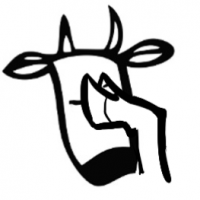
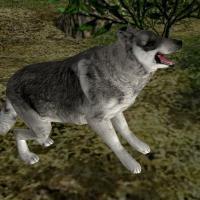
.thumb.jpg.b21ca1d0c15fb56b42c39b25a0a40815.jpg)
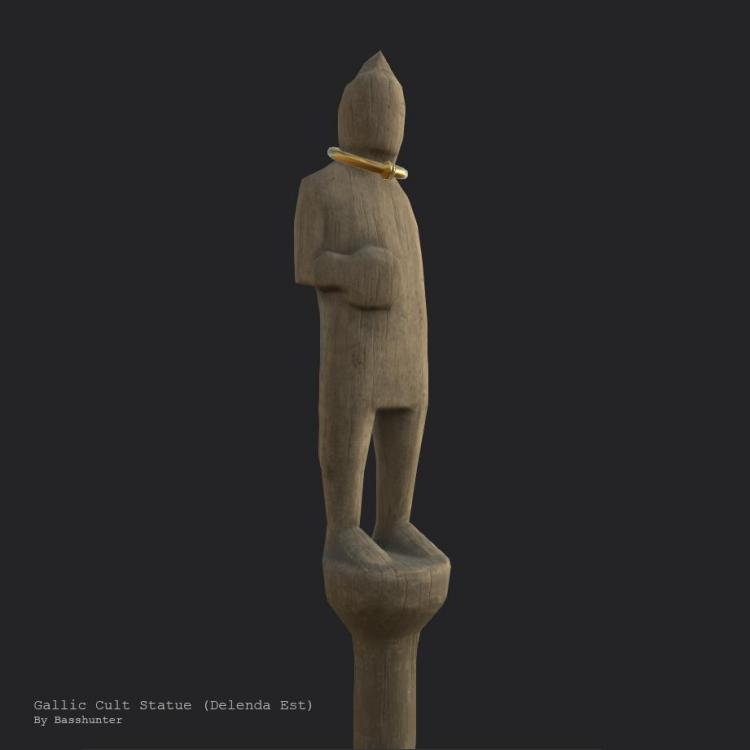
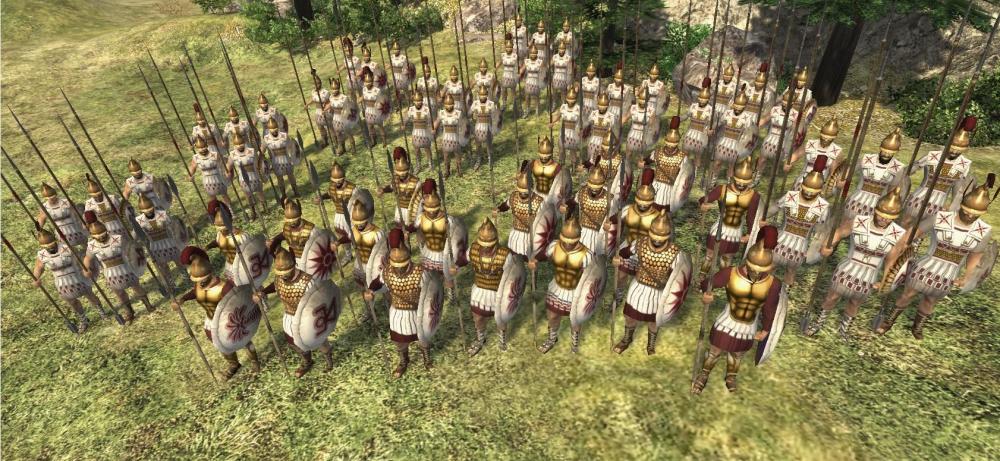


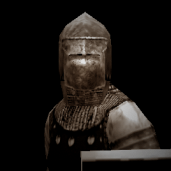
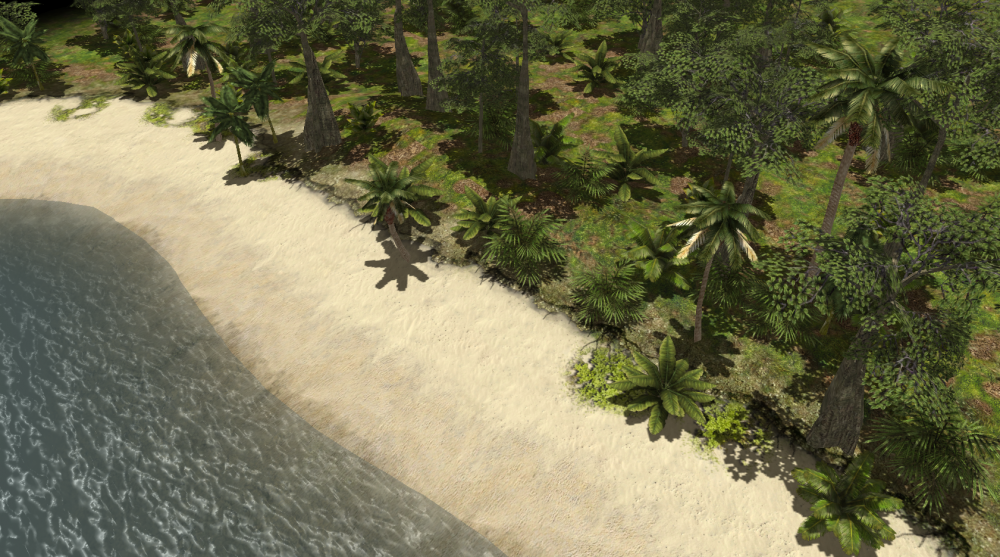
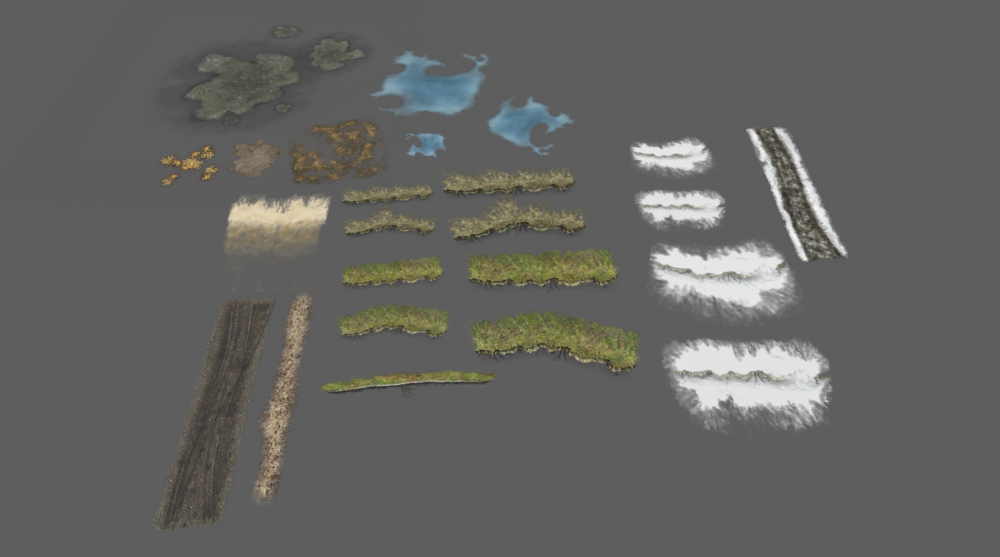
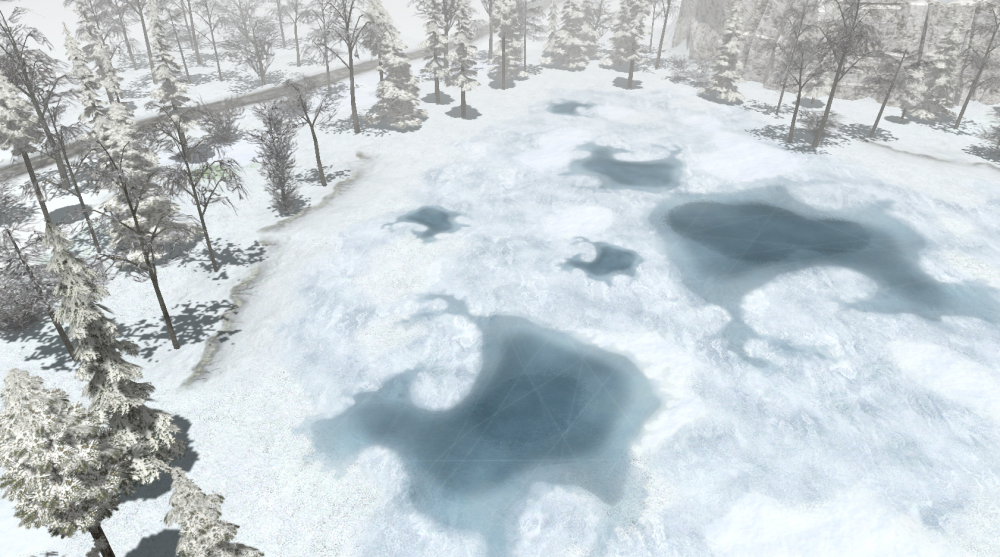




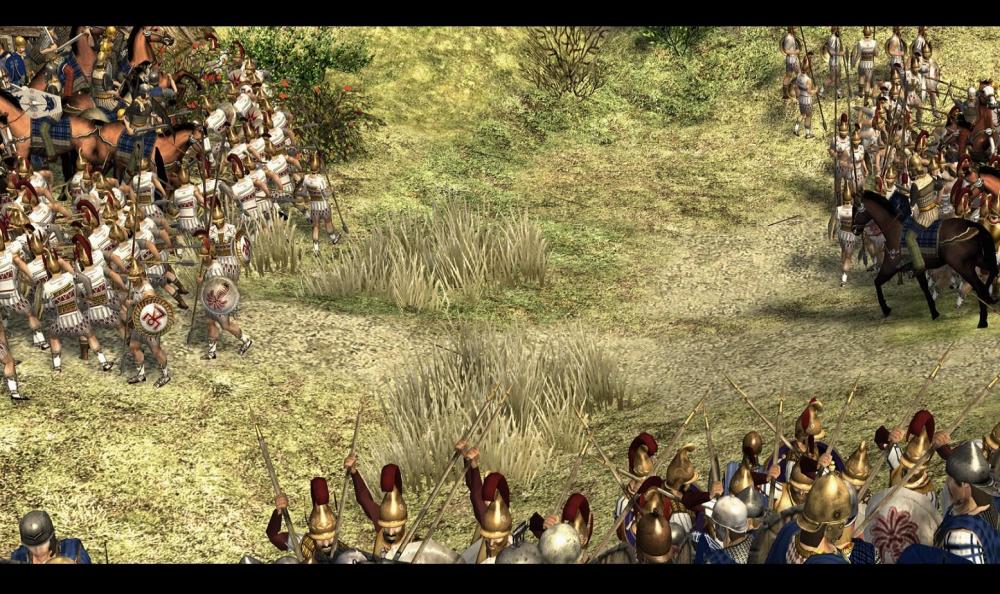
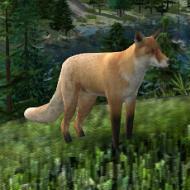



.thumb.png.ce58cea22940c255f5b0a735d5abee36.png)

